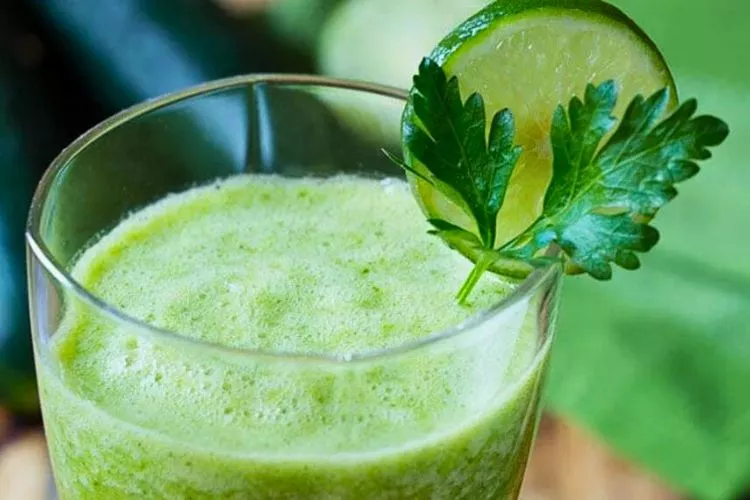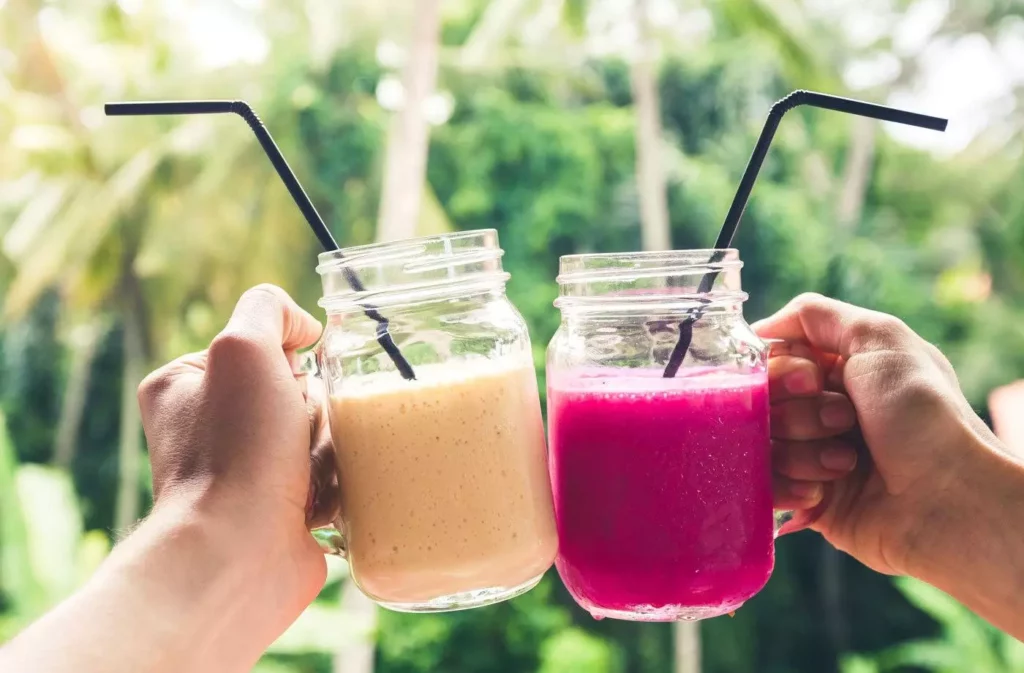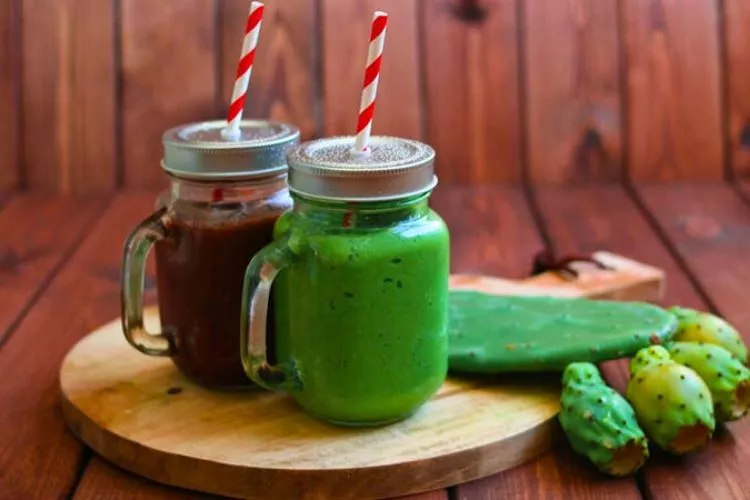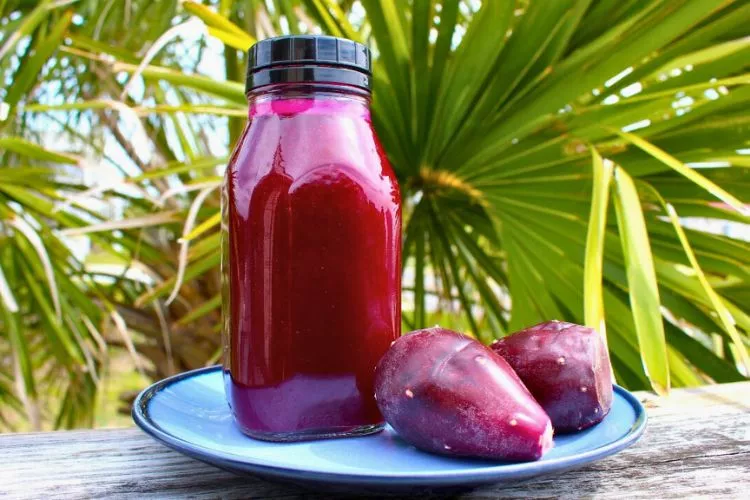Over time, cacti have gained fame not just for their resilience in harsh conditions but also for their varied uses.
Among these is the extraction of cactus juice, a beverage enjoyed by many folk cultures.
However, the question that often surfaces is, “Is cactus juice poisonous?”
This article delves into the science behind cacti, their juice, and its potential effects on human health, exploring whether such a natural potion could harbor any form of toxicity.

Join us as we navigate this prickly issue!
Is cactus juice poisonous?
While cactus fruits are edible and even consumed by some cultures, cactus juice itself can be poisonous depending on the type of cactus.
Most cacti contain various alkaloids, terpenes, and phenolic compounds that can cause adverse effects if consumed. Some varieties, like the peyote cactus, contain mescaline which is a psychoactive compound.
Consuming cactus juice from an unknown variety carries risks as different cacti contain varying levels of these compounds.
Even from edible cacti, consuming large amounts of raw, untreated juice could potentially cause nausea, vomiting, diarrhea and other digestive issues due to the high water content and fiber.
Therefore, while cactus juice may be non-toxic in small amounts from some varieties, it is generally not advisable to consume unknown cactus juices due to poisoning risks from the compounds many cacti naturally contain.
Which cacti are safe to drink from?
Sure, based on the information provided, most cacti do not make for a safe water source. Consuming water directly from many cacti can lead to severe diarrhea and vomiting. However, there are a few exceptions to the rule.

One such exception is the Fishhook Barrel Cactus (Ferocactus wislizeni). It is crucial to note that the juice from this cactus should only be consumed in small quantities and in extreme situations.
Another cactus safe to drink from is the Prickly Pear Cactus or Opuntia ficus-indica. Again, it’s recommended to consume it in small quantities and ideally when no other water source is available.
Safe consumption from these cacti quite often involves precise extraction methods that exist beyond simply squeezing the plant.
In conclusion, while cacti can indeed serve as a water source in desperate situations, this survival tactic should only be used as a last resort given the potential health risks, with only a few cacti exceptions like the Fishhook Barrel Cactus and the Prickly Pear Cactus.
How do you prepare cactus for drinking?
Preparation of cactus for drinking, specifically the Prickly Pear Cactus (Opuntia ficus-indica), involves several steps to ensure it’s safe to consume. Here’s a step-by-step guide to prepare a drink from cactus:
Materials Needed:
- Prickly Pear Cactus pads
- Knife
- Blender
- Strainer or cheesecloth
- Water
- Optional: sweeteners, like honey or sugar

Steps:
- Harvest: Always wear thick gloves when picking cactus pads. Use a pair of tongs to hold the cactus pad and cut it off from the plant with a sharp knife.
- Clean: Once harvested, be sure to wash the pads thoroughly to remove any residual dirt.
- De-Spine: Lay the cactus pad on a flat surface. Using a sharp knife, remove the cactus spines by sliding the blade flat against the pad surface, being careful not to cut off too much of the green flesh.
- Peel: After removing the spines, peel off the outer, tough skin from both sides to expose the inner meat.
- Blend: Cut the cleaned cactus pad into small pieces to fit into a blender. Add the pieces into the blender, then add water in a 1:1 ratio. Blend until smooth.
- Strain: Strain the blended mixture through a strainer or cheesecloth to separate the liquid from the solid pulpy part. Make sure to squeeze all liquid out.
- Sweeten: If desired, you can sweeten the cactus juice with some honey, sugar, or your preferred sweetener.
- Store: Store the cactus juice in the refrigerator. Consume within a few days for best taste and freshness.
Remember safety first; ensure that you’ve adequately removed all spines and sharp edges from the cactus before consumption. Always consult an expert if you’re unsure about the process.
Note:
It’s important not to rely on cactus juice as a primary source of hydration, especially in survival situations, as some types can cause gastrointestinal distress.
How long do you cook cactus juice?
To cook cactus juice, especially for curing in the context of stabilizing wood, heat it to a temperature of 90º C (194° F) for about 6-8 minutes. The process usually takes approximately 1-1.5 hours for small batches of pen blanks in a countertop toaster oven.
Please note that the information above refers to “Cactus Juice,” a brand-name stabilizing resin, and not the juice from a cactus plant for consumption. The context of this information is related to woodworking rather than culinary purposes.
How often can you drink cactus juice?
The frequency of consuming cactus juice depends on several factors, such as the type of cactus, the individual’s health condition, and the intended purpose of use.
Below, we will focus on the most commonly used cactus for consumption, the Prickly Pear Cactus (Opuntia ficus-indica).

- Moderation: In general, it’s safe to consume cactus juice in moderation, similar to other natural fruit juices. For a healthy individual, having a glass of cactus juice a few times a week should pose no serious health concerns.
- Health Conditions: For people with specific conditions, such as diabetes, consulting a healthcare professional for guidance is key. Although research shows that cactus juice can help regulate blood sugar levels, it’s essential to understand the potential interactions with medications or individual circumstances.
- Therapeutic Use: Some individuals consume cactus juice for its suggested health benefits, such as its antioxidant, anti-inflammatory, and immune-boosting properties. In these cases, it’s crucial to follow the recommended dosage or specific treatment duration given by a healthcare professional.
In conclusion, while cactus juice can be a nutritious and refreshing beverage, it’s essential to consume it in moderation.
If you’re unsure about the right frequency of consumption or have a pre-existing health condition, always consult a healthcare professional for personalized guidance.
How do you preserve cactus juice?
Preserving cactus juice properly is vital for retaining its taste and health benefits. Here’s a detailed guide on how you can preserve your freshly prepared cactus juice:
Materials Needed:
- Cactus juice
- Clean jars or airtight containers
- Refrigerator
- Optional: Lemon or Lime

Steps:
- Prepare the Juice: Start by preparing the cactus juice using the method outlined previously.
- Cool Down: Let the cactus juice cool to room temperature after preparation. It’s not advisable to put a hot beverage directly in the fridge as it might alter the fridge’s temperature and affect other stored items.
- Add a Preservative: While this step is optional, adding a natural preservative like lemon or lime juice not only enhances the flavor but also helps to preserve the juice longer because of their high citric acid content.
- Store in a clean container: Pour the cooled cactus juice into clean jars or airtight containers. Using clean containers is crucial to avoid any bacterial contamination that could lead to spoilage.
- Refrigerate: Store the cactus juice in the refrigerator, ideally at temperatures below 40°F (4°C). This cool temperature slows down the development of bacteria, yeasts, or molds that might spoil the juice.
- Consume within a few days: For the best taste and freshness, aim to consume the juice within a few days (3-5 days).
Remember, even with these preservation steps, homemade cactus juice doesn’t contain preservatives like store-bought ones and won’t last as long. Always check for color, smell, or taste changes before consuming.
Note:
Optional: For long-term preservation, consider freezing the juice. Freeze cactus juice in an ice cube tray and transfer the cubes to a freezer-safe bag once they’re fully frozen. They can be stored frozen for up to 3-6 months.
What temperature is cactus juice cured at?
Cactus Juice, a stabilizing resin, is cured at a temperature between 80°C and 96°C (178°F – 205°F) during the manufacturing process. The resin within the blank will harden in 6-8 minutes if the temperature of the Cactus Juice is 90°C or higher.
Please note that Cactus Juice in this context refers to a brand-name stabilizing resin used in woodworking, not the juice from a cactus plant for consumption.
Conclusion:
While certain types of cacti can indeed contain toxins that are harmful if ingested, the juice of the Prickly Pear cactus is not toxic when properly prepared. In fact, it is often consumed for its potential health benefits.
Nonetheless, consuming the juice in moderation is advised due to the potential for gastrointestinal distress.
Moreover, individuals with certain health conditions should seek advice from a medical professional before incorporating cactus juice into their diet.
Always ensure the correct identification and preparation of the cactus to avoid potential health risks.


